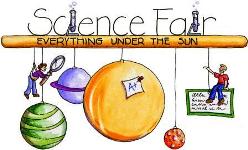





Published on Sep 05, 2023
The objective: My goals for this project were to find mathematical relationships in nature. I decided to conduct four experiments to find mathematical relationships:
(1) in the number of flower petals and vegetable leaves,
(2) in the leaf arrangement in plants,
(3) in the number of spirals in plants, and
(4) in shell shapes.
In (1), I counted the number of flower petals and vegetable leaves.
In (2), I used iceberg lettuce, flowering kale, and succulents. Starting with the outermost leaf, I measured the angle of each successive leaf.
I also cut the leaves of the flowering kale and I numbered each successive stalk. Then I looked for patterns and relationships in mathematics.
For (3), I looked for spirals in cauliflowers, a pinecone, succulents, a sunflower, and a pineapple. In (4), I observed and analyzed four kinds of shells to find a Fibonacci spiral.
I found in (1) and (2) that flower petals and vegetables with leaves had relationships with Fibonacci numbers. Also, I found in (2) that all the angles on my successive leaves were from 137~140 degrees.
This was the Golden Angle. I used LOGO for spiral simulation and I confirmed when I applied Golden Angle to the simulation program, the result showed a well-observed spiral in nature. In the flowering kale, I discovered many relationships.
I found that the stalk directly below stalk number 1 was stalk 14. That left a distance of 13, a Fibonacci number. I realized it took 5 right turns and 8 left turns to get from stalk 1 to 14, again, these are consecutive Fibonacci numbers.
I also found spirals in the cut stalks in the flowering kale. I found 3 clockwise, and 5 counter clockwise spirals. Those are consecutive Fibonacci numbers.
In (3), for all my experimental objects for this experiment, there were consecutive Fibonacci numbers in the spirals going clockwise and counter clockwise.
In (4), I did not find any Fibonacci spirals, but I still could identify a mathematical relationship.
All my shells were formed in an equiangular and similar manner. I learned that you could describe very different shells with the same mathematical term.
I can conclude there is much mathematics combined into nature. Many flowers, plants, and others have survived in long-term natural selection because Fibonacci numbers make a good balance for living. That is why so many living things today have the Fibonacci sequence hidden behind them.
This Mathematical project was to search for various mathematical relationships existing inside nature